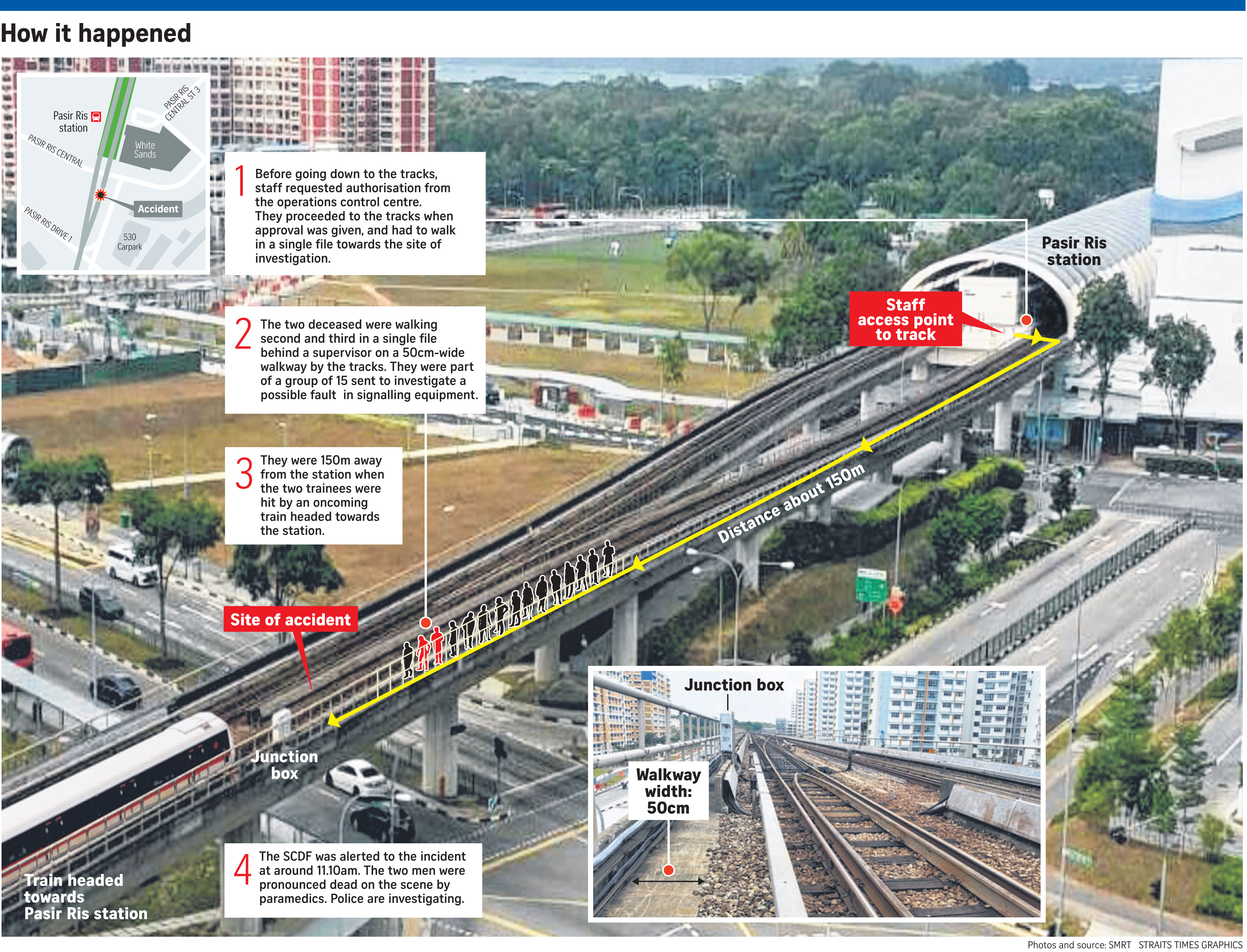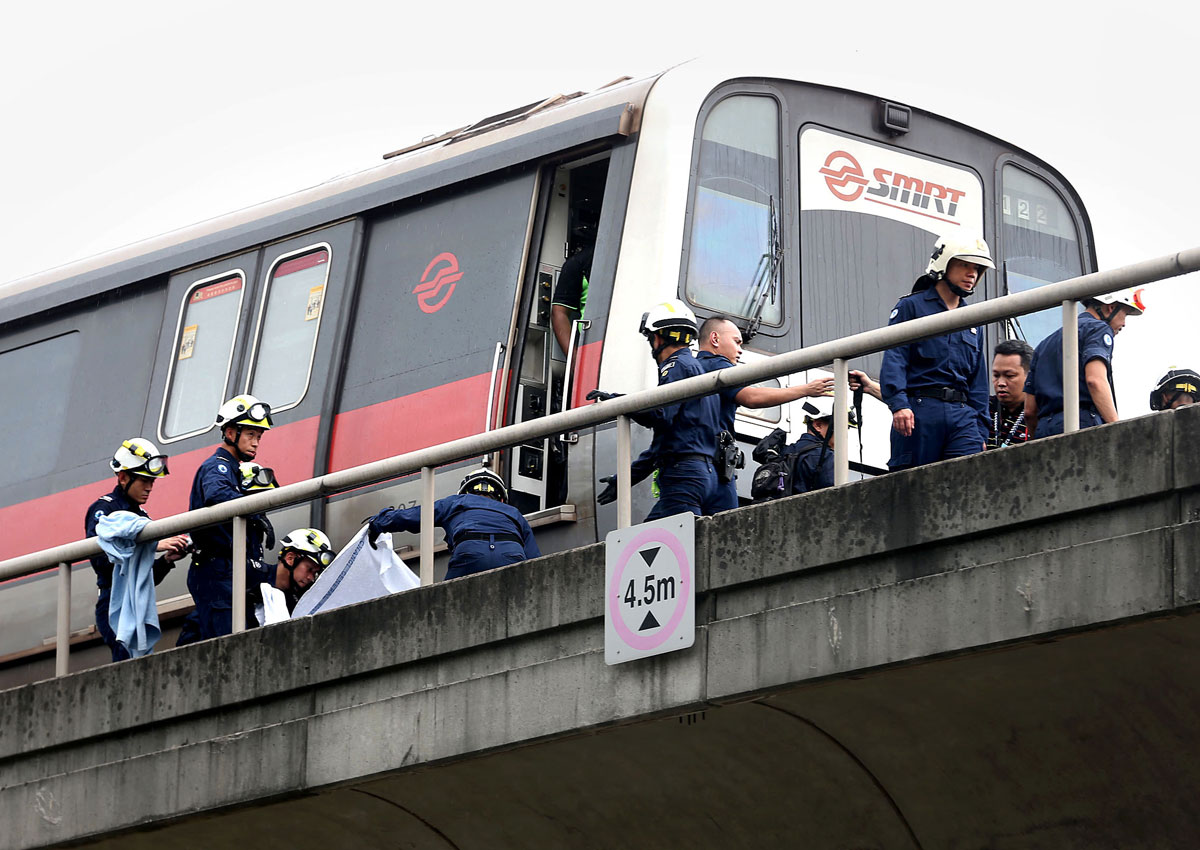Sending maintenance crew to the track level to investigate faults – even as trains services are running – is a normal practice, SMRT said in the wake of yesterday’s accident.
SMRT Trains managing director Lee Ling Wee said staff walk near the tracks to check on faults a “few times a month”.
At Pasir Ris MRT station, the walkway which the two men were on was more than 50cm away from the line.
The operator was last night still investigating whether the men had got onto the track or were too close to the oncoming train.
Mr Lee said permission must be granted by SMRT’s operations control centre before staff are allowed to access the 50cm-wide walkway.
However, they should not be on the tracks themselves when trains are running.
In yesterday’s incident, 15 technical staff, including the two who died, were sent to investigate an alarm triggered by a sensor on a “point machine”. They would have been required to ask permission for the power to the tracks to be cut before they could check the device.
Point machines are deployed at crossings to direct trains when tracks split into two.
They are typically used to switch tracks for trains at crossing points.
Mr Lee said: “The accident happened before they actually reached the site where they were supposed to do the investigation.”

The 15 staff had walked about 150m from the Pasir Ris MRT station platform, beside the eastbound tracks, when the accident happened at about 11.10am.
The two men killed – Mr Nasrulhudin Najumudin, 26, and Mr Muhammad Asyraf Ahmad Buhari, 24 – had joined SMRT in January and were doing their on-the-job training.
The oncoming train which hit them was pulling into the Pasir Ris MRT station at about 60kmh.
Mr Lee said: “The rules are that they are supposed to walk against the direction of the train.”
He added that that was what they were doing.
Train captains are usually given alerts on activities taking place on the tracks. and SMRT said it would look into how the men could have been hit, when there was a “line of sight”.
The train which hit the men was being driven automatically, but a captain was on board.
Asked why such junior staff were allowed near the tracks, Mr Lee said both trainees and permanent staff are trained on safety issues beforehand.
Yesterday, Downtown Line (DTL) crossed an important milestone: 150 days without any major service disruption. It…
Posted by Khaw Boon Wan on Tuesday, March 22, 2016
Additionally, SMRT chief executive Desmond Kuek said going onto the track level is a “routine” and “controlled” practice.
Mr Kuek said: “When we detect a fault and we need to troubleshoot it, the first course of action is to go down onto the site to determine what is the cause.
“The only way to do so, to get access to the track while service is on, is to walk on the side with supervision and control from the ops control centre, with all the safety and permissions granted. This is a controlled and supervised activity.”
Meanwhile, SMRT said it is reviewing all safety protocols relating to staff track access, and it will improve upon them when necessary.
It is currently investigating the case with the police and the Ministry of Manpower.
In October 2010, a 48-year-old technician was at a designated walkway on the Bukit Panjang LRT, checking the power rail between Phoenix and Bukit Panjang stations, when an oncoming train hit him. He suffered head injuries and needed a leg amputation, and died about two weeks later.
adrianl@sph.com.sg

This article was first published on March 23, 2016.
Get a copy of The Straits Times or go to straitstimes.com for more stories.







































